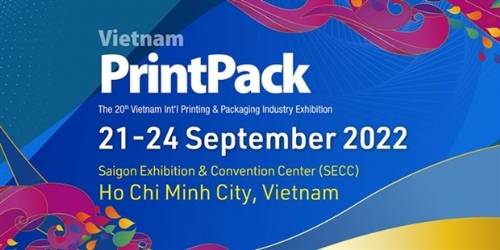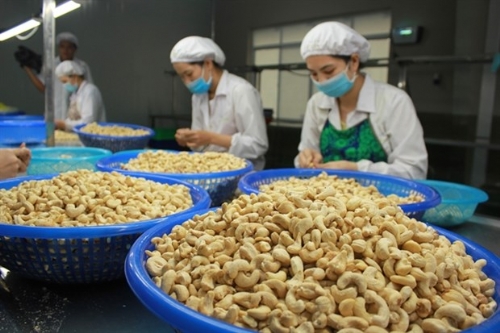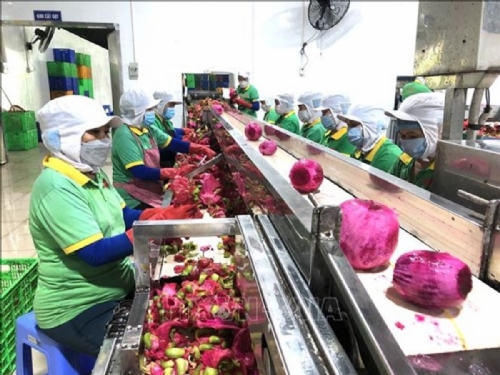EuroCham proposes Gov’t to cut 50 per cent of registration fee for imported cars
Monday, July 6, 2020 09:54

People pay registration fees for cars at Hà Nội Police Office. — Photo nguoiduatin.vn
HÀ NỘI — The European Chamber of Commerce in Việt Nam (EuroCham) proposed the Government to apply the 50 per cent registration fee reduction to all automotive assembly firms, importers and dealers of new vehicles.
The proposal was part of recommendations at the EuroCham’s 12th Whitebook publication, which was announced on Tuesday. It was issued after the Vietnamese Government recently decided to apply the 50 per cent fee reduction for buyers of locally-manufactured and -assembled vehicles until the end of this year.
The cut aims to stimulate domestic consumption and remove difficulties for local production and business due to the impacts of the COVID-19 pandemic.
Currently, buyers of cars with less than nine seats in Việt Nam are subject to a 10 per cent registration fee, or 12 per cent for residents of Hà Nội.
“With the Prime Minister’s decision to reduce the registration fee, buyers of domestically-manufactured and -assembled vehicles will only have to pay a fee of 5-6 per cent. Those who buy cars imported from abroad still have to pay registration fees of 10-12 per cent depending on the locality,” EuroCham said in the book.
For domestic car joint ventures, only two European brands – Mercedes and Peugeot – out of 19 imported in Việt Nam will benefit for their locally assembled models.
EuroCham said stimulating consumption in the automotive market is necessary as customers struggle to maintain their activities. Furthermore, it will take time for supply chain disruption to be resolved.
“Such discrimination in favour of locally assembled vehicles is not casting the intended positive light for Việt Nam with the European Union when the EVFTA is expected to enter into force soon,” EuroCham said.
EuroCham also recommended a 50 per cent reduction of Value Added Tax and of excise tax.
Due to the impact of COVID-19, 2020 is now proving to be an extremely challenging year for the whole automotive industry worldwide. The full supply chain for new vehicles and spare parts is disrupted.
Automakers in the EU, the US and Việt Nam have had to suspend operations – manufacturing, distribution and retail – for about a month in April to comply with social distancing regulations of the Government.
Despite social distancing being revoked in May, the sales in 2020 were still far below expectation. On April 28, Fitch Rating’s forecast a 21.8 per cent drop in new cars sales in Việt Nam for the full year 2020.
According to Vietnam Automobile Manufacturers' Association, sales hit a five-year low, dropping 36 per cent year-on-year to about 61,000 vehicles in the first four months of 2020. After-sales service has, so far, decreased by 30-40 per cent.
EuroCham said that bonded warehouses are not allowed to import complete-built-up (CBU) vehicles cars for sale in Việt Nam. CBU importers must pay all taxes, including import tax, special consumption tax and value-added tax at customs clearance immediately. Car sales in Việt Nam are now very low.
“The market will take time to recover as customers need to ensure their own financial safety. Still, costs such as real estate rental and labour did not fall. Cash is scarce both at importers and dealers and will remain so until a global recovery in the supply chain and the market,” EuroCham noted.
For the automotive industry to maintain jobs and operations until post-COVID-19 recovery, EuroCham recommended the Ministry of Finance exceptionally re-allows partial clearance at customs by re-authorising bonded warehouses for new CBU imported vehicles until December 2020.
“Such a customs clearance extension should provide the necessary time for importers to recover financially to pay taxes gradually as they sell their stock and as the economy recovers.”
Việt Nam’s automobile market exceeded a record 400,000 new vehicles – 302,000 passenger cars and 80,000 commercial vehicles – in 2019. Of these, 70 per cent were locally assembled units and 30 per cent imported cars. — VNS
Other news
- HCM City to host Vietnam Print Pack 2022 expo(9/16/2022 11:02:26 AM)
- Medical-pharmaceutical, beauty products exhibitions open in HCM City(9/16/2022 10:58:48 AM)
- Firms must work to fully benefit from UKVFTA: Insiders(8/24/2022 3:15:30 PM)
- Vietnam, Argentina boost trade cooperation(8/23/2022 3:51:49 PM)
- Workshop helps fresh fruit exporters learn about China’s new regulations(8/23/2022 3:47:36 PM)
- HCM City to host Int'l Textile & Garment Industry Exhibition(8/23/2022 3:11:55 PM)
- Saigon Autotech & Accessories Show to be held in late October(8/19/2022 8:38:38 AM)
- Vietnamese handicrafts go on sale at New York Now 2022(8/18/2022 8:52:55 AM)
- Week of OCOP products launched in Hanoi(8/17/2022 8:39:01 AM)
- Trade fair looks to expand “One Commune One Product” markets(8/16/2022 11:21:14 AM)






